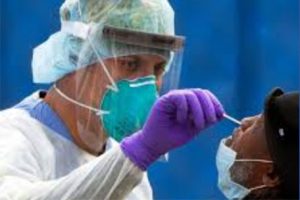State COVID-19 Testing Guidelines Overhauled
Sacramento, CA – As coronavirus cases are climbing quickly, about 7,800 a day, California has adjusted its guidelines for who can be tested into four tiers.
The new system is based on prioritization with those who are hospitalized with symptoms, in close contact with infected people or when necessary to control a local outbreak in tier one. On the bottom rung, are those without symptoms and not in essential jobs will not be prioritized for testing until results can be turned around in less than 48 hours.
“This is all done while we are in parallel working to increase testing capacity across the state,“ said Dr. Mark Ghaly, secretary of the California Health and Human Services Agency.
The overhaul comes in the wake of testing shortages and long wait times for results as new outbreaks breakout around the state. On Monday, Gov. Gavin Newsom closed malls, hair salons, gyms, and other indoor businesses in most of the state and barred inside religious services to try to stem the case surge, as reported here.
This new method of testing, according to Ghaly, is designed to help hone in on outbreaks spread between essential workers or by gatherings of family and friends. He added that the faster results are returned in those areas of potential outbreak is important to the state’s ability to contain the spread.
The state is testing about 107,000 people per day. The surge in cases has made contact tracing harder, with about 10,000 contact tracers running the investigations.
“We did not build the current contact tracing program on this level of transmission, “ Ghaly said.
The second tier in the new testing guidelines includes anyone with symptoms or asymptomatic persons who live in congregate care settings like nursing homes or are giving care to the elderly. Also included are patients entering or leaving hospitals and those who work in emergency services, jails, or prisons. Included in the third tier are workers in retail, manufacturing, food service, agriculture, public transportation, and education.

